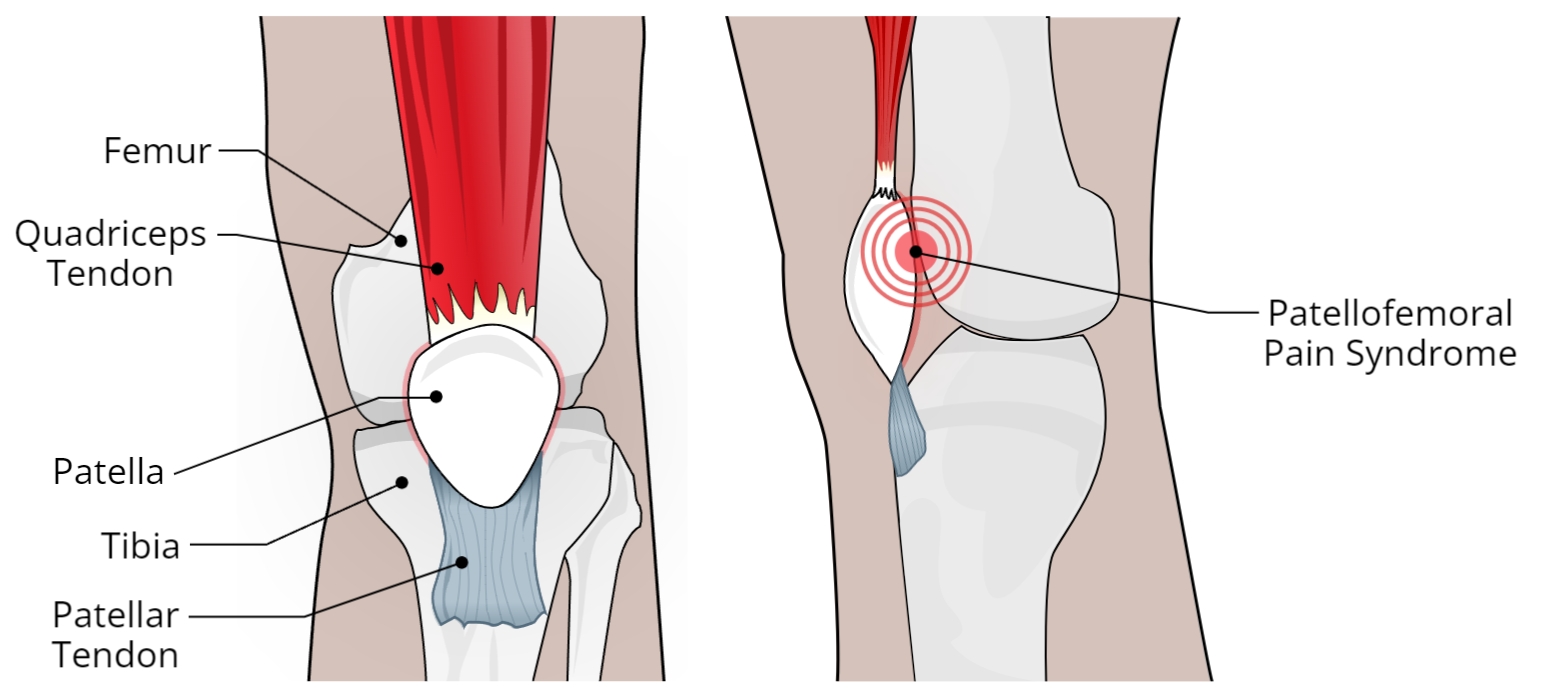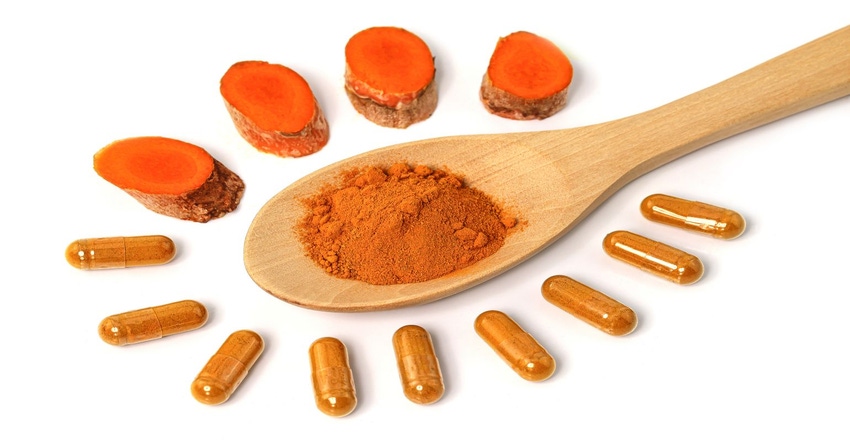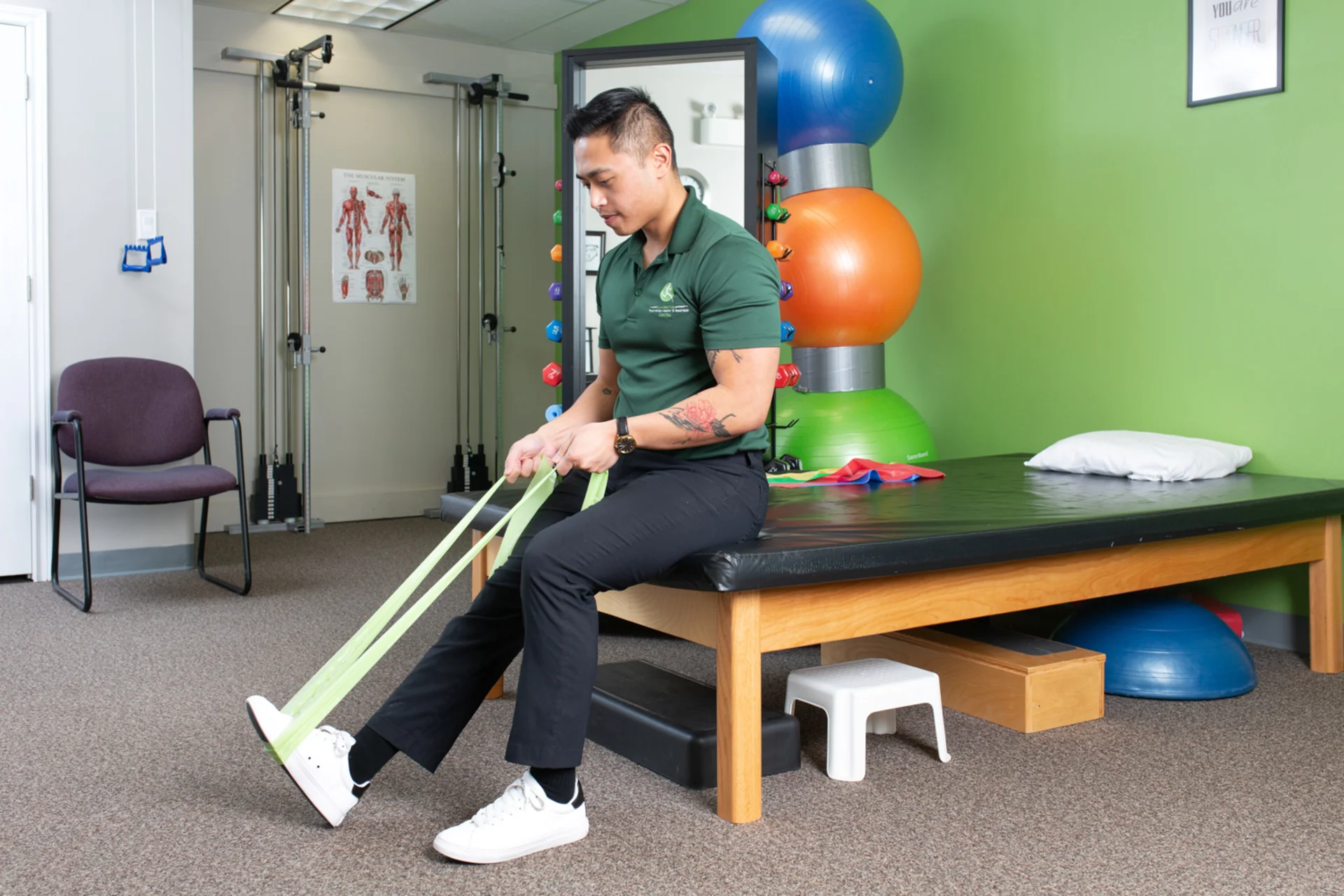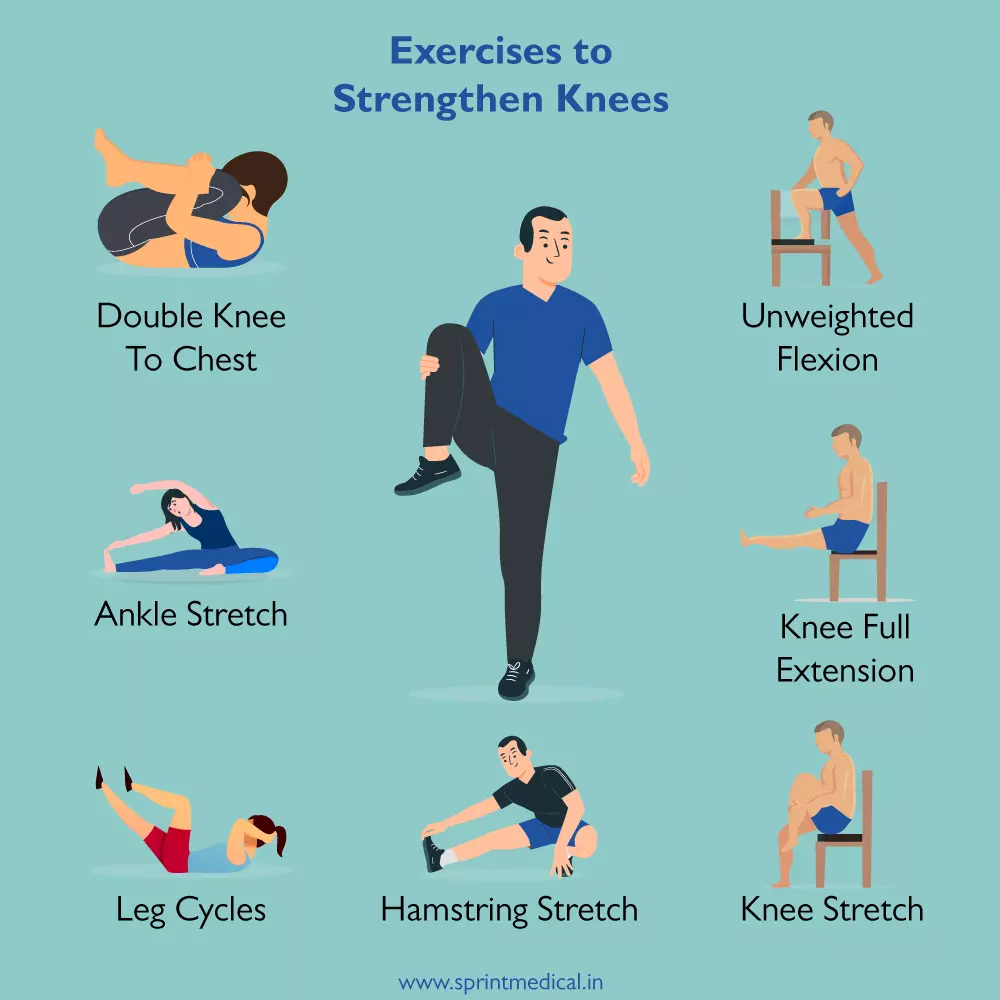Your Cart is Empty

হাঁটু আপনার শরীরের সবচেয়ে বড় জয়েন্ট। এটি হাড়, লিগামেন্ট, তরুণাস্থি এবং টেন্ডন দ্বারা গঠিত।
হাঁটুর ব্যথা অনেক কারণে হতে পারে। আপনি যে কোনও বয়সে হাঁটুতে ব্যথা অনুভব করতে পারেন, তবে বয়স্ক ব্যক্তিদের জয়েন্টের অবক্ষয়ের কারণে এটি হওয়ার সম্ভাবনা বেশি থাকে, এটি অস্টিওআর্থারাইটিস নামে পরিচিত একটি অবস্থা।
এই নিবন্ধে, আমরা অবাঞ্ছিত হাঁটু জয়েন্টে ব্যথার সম্ভাব্য কারণ এবং চিকিত্সা নিয়ে আলোচনা করব। আমরা ব্যায়ামের জন্য কিছু দ্রুত টিপসও দেব যা ব্যথা উপশম করতে সাহায্য করবে।
তাই পড়তে থাকুন!
Bursa হল একটি থলি যা জয়েন্টের উপরে ত্বকের নিচে অল্প পরিমাণে তরল ধারণ করে। জয়েন্ট নড়াচড়া করার সময় এটি ঘর্ষণ প্রতিরোধ করতে সাহায্য করে। অত্যধিক ব্যবহার, পড়ে যাওয়া বা বারবার বাঁকানো এবং হাঁটু গেঁথে যাওয়া হাঁটুর উপরে বার্সাকে জ্বালাতন করতে পারে। এটি ব্যথা এবং ফোলা বাড়ে।
/assets/production/practices/7763f249293956349d0118396d3b4818467a3bc4/images/2631311.jpg)
যখন হাঁটুর ক্যাপ অবস্থানের বাইরে চলে যায়, যার ফলে হাঁটুতে ব্যথা এবং ফুলে যায়। একে "প্যাটেলার ডিসলোকেশন" বলা হয়।

হাঁটুতে আঘাত বা হাঁটুতে আকস্মিক মোচড়ের কারণে সাধারণত মচকে যাওয়া বা টেনে যাওয়া হাঁটুর লিগামেন্ট বা পেশী হয়। লক্ষণগুলির মধ্যে প্রায়ই ব্যথা, ফুলে যাওয়া এবং হাঁটতে অসুবিধা হয়। মোচের সাথেও তরুণাস্থি কান্না হতে পারে।

এটি দৌড়ানো, লাফানো বা সাইকেল চালানোর মতো নির্দিষ্ট ক্রিয়াকলাপের সময় একটি টেন্ডনের অতিরিক্ত ব্যবহারের কারণে সৃষ্ট টেন্ডনের প্রদাহ। এটি বাস্কেটবলের মতো খেলার ক্ষেত্রেও ঘটে, যেখানে লাফ দেওয়ার পরে মাটিতে আঘাত করার শক্তি টেন্ডনকে চাপ দেয়।

অস্টিওআর্থারাইটিস হল সবচেয়ে সাধারণ ধরনের আর্থ্রাইটিস যা হাঁটুকে প্রভাবিত করে। অস্টিওআর্থারাইটিস হল একটি অধঃপতন প্রক্রিয়া যেখানে জয়েন্টের তরুণাস্থি ধীরে ধীরে চলে যায় এবং প্রায়শই মধ্যবয়সী এবং বয়স্ক ব্যক্তিদের প্রভাবিত করে। অস্টিওআর্থারাইটিস জয়েন্টে অতিরিক্ত চাপ যেমন বারবার আঘাত বা অতিরিক্ত ওজনের কারণে হতে পারে। 
রিউমাটয়েড আর্থ্রাইটিস হাঁটুকে প্রভাবিত করতে পারে যার ফলে জয়েন্ট স্ফীত হয় এবং হাঁটুর তরুণাস্থি নষ্ট হয়ে যায়। রিউমাটয়েড আর্থ্রাইটিস প্রায়শই অস্টিওআর্থারাইটিসের চেয়ে আগের বয়সে ব্যক্তিদের প্রভাবিত করে।
পেশীর ভারসাম্যহীনতা , আঁটসাঁটতা এবং পায়ের সারিবদ্ধতার সমস্যা সাধারণত এই অবস্থার কারণ হয়। এটি হাঁটুতে ব্যথা এবং মাঝে মাঝে "বাকলিং" সৃষ্টি করে, যার অর্থ হাঁটু হঠাৎ আপনার ওজন সহ্য করতে পারে না। এটি পুরুষদের তুলনায় মহিলাদের জন্য বেশি সাধারণ। 
এই অবস্থা অল্প বয়সে ঘটে, যখন হাড় এবং হাঁটুর অন্যান্য অংশ এখনও পরিবর্তিত হয়। এটি হাঁটুর নীচে একটি বেদনাদায়ক বাম্প হতে পারে। এটি বিশেষ করে কিশোর ছেলে এবং মেয়েদের মধ্যে সাধারণ।
iliotibial (IT) ব্যান্ড হল শক্ত টিস্যুর এক টুকরো যা নিতম্ব থেকে হাঁটুর বাইরের অংশে চলে। কার্যকলাপের সাথে, এটি সময়ের সাথে স্ফীত হতে পারে। যার ফলে হাঁটুর বাইরের দিকে ব্যথা হয়। উতরাই যাওয়ার সময় এটি দৌড়বিদদের মধ্যে সাধারণ। 
হাঁটুর জয়েন্টের ব্যথা উপশমের জন্য এখানে কিছু সম্ভাব্য চিকিত্সা রয়েছে যা আপনি আপনার দৈনন্দিন জীবনে অন্তর্ভুক্ত করতে পারেন-
যারা স্থূলকায় তাদের শরীরের অতিরিক্ত ওজন হাঁটুতে বেশি চাপ দেয়। আর সেই কারণেই শরীরের কিছু ওজন কমানো শেষ পর্যন্ত হাঁটুর ব্যথা নিরাময়ে সাহায্য করবে।
আপনার যদি গুরুতর হাঁটুতে ব্যথা হয় তবে আপনার হাঁটুতে চাপ না দেওয়ার চেষ্টা করুন। আপনি হাঁটু সমর্থন করার জন্য একটি বন্ধনী পরতে পারেন। এছাড়াও, দীর্ঘ সময়ের জন্য নড়াচড়া করা এবং দাঁড়ানো থেকে বিরত থাকুন।
এগুলি গরম এবং ঠান্ডা থেরাপি হিসাবে পরিচিত। মাঝে মাঝে হিটিং প্যাড প্রয়োগ করলে ব্যথা কমে যাবে এবং জয়েন্টের চিকিৎসায় সাহায্য করবে। 
আঘাতের পরেই আইস প্যাকগুলি ভাল। এটি জয়েন্টকে হিমায়িত করবে এবং দ্রুত প্রদাহ এবং ফোলা উপশম করবে।
কিছু খাদ্যতালিকাগত সম্পূরক অস্টিওআর্থারাইটিসের কারণে হাঁটুর ব্যথা কমাতে সাহায্য করে। যেমন,
গ্লুকোসামিন সালফেট ক্ষতিগ্রস্ত তরুণাস্থির পুনঃবৃদ্ধিতে সাহায্য করে। গবেষণা দেখায় যে গ্লুকোসামিন জয়েন্টের প্রদাহ কমাতে , জয়েন্টের গতিশীলতা এবং নমনীয়তা উন্নত করতে, জয়েন্টের শক্ততা প্রতিরোধ করতে এবং সামগ্রিক জয়েন্টের স্বাস্থ্যের উন্নতিতে সহায়তা করতে পারে ।
কনড্রয়েটিন সালফেট সাইনোভিয়াল তরল বাড়াতে, টিস্যু পুনরুদ্ধারে সহায়তা করে এবং যথোপযুক্ত জয়েন্টের তৈলাক্তকরণকে উন্নীত করতে সাহায্য করে।
MSM প্রদাহের বিরুদ্ধে লড়াই করতে এবং টিস্যু পুনরুদ্ধারে সহায়তা করে। একটি সাধারণভাবে স্বীকৃত নিরাপদ হিসাবে (GRAS) অনুমোদিত পদার্থ হিসাবে , MSM বেশিরভাগ ব্যক্তিদের দ্বারা ভালভাবে সহ্য করা হয়।
হলুদ থেকে প্রাপ্ত বায়োঅ্যাকটিভ যৌগগুলিকে কারকিউমিন বলা হয় যা আমাদের যৌথ স্বাস্থ্যে দুর্দান্ত প্রভাব ফেলে। কারকিউমিন তরুণাস্থি ভাঙ্গন রক্ষা করতে সাহায্য করে এবং IKBA এর ফসফোরিলেশনকে বাধা দিয়ে হাড়ের জয়েন্টের নিরাময় প্রক্রিয়ায় অংশ নেয়। 
আপনি কারকুমা জয়েন্ট গার্ড নেওয়ার কথাও বিবেচনা করতে পারেন । এটি একটি কার্যকরী খাবার এবং আপনার হাড়ের জয়েন্টগুলির যত্ন নেওয়ার জন্য এবং সেগুলিকে সুরক্ষিত রাখার জন্য বিশেষভাবে তৈরি করা হয়েছে। এটি গ্লুকোসামিন সালফেট, কনড্রয়েটিন সালফেট, মিথাইল সালফোনাইল মিথেন এবং কারকিউমিনের সংমিশ্রণ সূত্র। আমরা আগেই উল্লেখ করেছি যে এই সাপ্লিমেন্টগুলি অস্টিওআর্থারাইটিসের জয়েন্টের ব্যথা কমাতে সাহায্য করে। এবং সবচেয়ে ভাল অংশ হল - এটি জৈব এবং USDA প্রত্যয়িত।
প্যারাসিটামল বা আইবুপ্রোফেনের মতো ব্যথানাশক ওষুধ খাওয়া হাঁটুর ব্যথার জন্য উপকারী হতে পারে। যাইহোক, ব্যথানাশক ওষুধের অতিরিক্ত মাত্রা কিডনির ক্ষতি সহ তীব্র পার্শ্ব প্রতিক্রিয়া সৃষ্টি করবে।
ফিজিওথেরাপি হাঁটুর জয়েন্টের ব্যথার চিকিৎসায় এবং নড়াচড়া পুনরুদ্ধারের ক্ষেত্রে খুব কার্যকর হতে পারে। তবে নিশ্চিত করুন যে আপনি একজন বিশেষজ্ঞের কাছ থেকে থেরাপি নিচ্ছেন। থেরাপিস্ট কিছু ম্যাসেজ কৌশল সঞ্চালন করবেন যা দ্রুত আপনার ব্যথা পুনরুদ্ধার করবে। কখনও কখনও সম্পূর্ণ চিকিত্সার জন্য আপনার একাধিক সেশনের প্রয়োজন হতে পারে।

যদি আপনার হাঁটুতে ব্যথা গুরুতর আঘাত থেকে আসে, তাহলে ব্যথার চিকিৎসার জন্য আপনাকে অস্ত্রোপচারের প্রয়োজন হতে পারে। কখনও কখনও এটি দ্রুত হতে হবে, অথবা আপনার সরানোর ক্ষমতা থাকবে। আপনার হাঁটু জয়েন্টের অবস্থার উপর নির্ভর করে চিকিত্সকরা আর্থ্রোস্কোপিক সার্জারি, হাঁটু প্রতিস্থাপন এবং অস্টিওটমি করবেন।
কোনো ব্যায়াম করার আগে, ওয়ার্ম আপ নিশ্চিত করুন এবং শটের জন্য আপনার পেশী প্রস্তুত করুন! হাঁটুর জয়েন্টের ব্যথা উপশমের জন্য এখানে কিছু ব্যায়াম রয়েছে যা আপনি বাড়িতে শিখতে এবং অনুশীলন করতে পারেন-

উত্তর: আপনার হাঁটুর জয়েন্টের ব্যথা গুরুতর কিনা তা জানতে এখানে সাধারণ লক্ষণগুলি রয়েছে-
উত্তর: আপনার হাঁটুকে মজবুত করতে, আপনাকে নিয়মিত হাঁটুর ব্যায়াম করতে হবে যা হাঁটুর বিকাশের দিকে মনোযোগ দেয়। আপনি এই ব্যায়াম চেষ্টা করতে পারেন-
উত্তর: হাঁটুর ব্যথা বয়স্ক ব্যক্তিদের জন্য, কিন্তু সত্যিকার অর্থে, এটি অল্প বয়স্কদের মধ্যেও সাধারণ। আপনি যদি 20 বছর বয়সী হন এবং হাঁটুর ব্যথায় ভুগছেন তবে এটি স্বাভাবিক তবে সঠিক যত্নের প্রয়োজন। যাইহোক, 30 এর পরে হাঁটুতে ব্যথা হওয়ার সম্ভাবনা সবচেয়ে বেশি।
তথ্যসূত্র:
https://www.webmd.com/pain-management/knee-pain/knee-pain-causes
https://stanfordhealthcare.org/medical-conditions/bones-joints-and-muscles/knee-problems/types.html
https://www.nhs.uk/conditions/knee-pain/
https://www.webmd.com/osteoarthritis/ss/slideshow-knee-exercises
মন্তব্য দেখানোর আগে অনুমোদিত হবে.
শহীদ
অক্টোবর 02, 2024
I need this